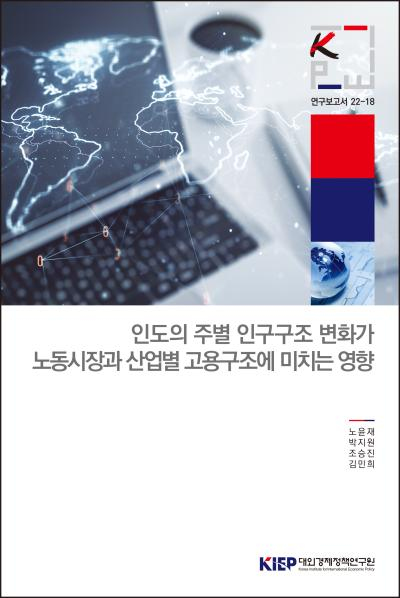Policy Analyses
Publications
Policy Analyses
To list

The Effects of Population Changes on the Labor Market in India
economic development, labor market
Author Yoon Jae Ro, Jiwon Park, Seung Jin Cho, and Minhee Kim Series 22-18 Language Korean Date 2022.12.30
With projections showing it will overtake China as the world’s most populous country in 2023, India is also among the youngest nations worldwide. Even with the impact of the COVID-19 pandemic, India has sustained a robust economic growth rate, fueled by its young workforce and the consequent surge in domestic consumption. Moreover, the prospect of global companies moving their production facilities from China to India adds to the positive outlook for India’s young labor force. Key drivers like capital accumulation, population growth, and technological advancement shape economic growth rates, and India excels in both high economic growth and population expansion. Yet, there’s a limited body of research on India’s population structure and its foreseen impact. Thus, this study delves deeply into the demographic shifts in India, the policies underlying these changes, and the economic effects stemming from them.
Chapter 2 offers an overview of the structure of India’s population and its population policies. According to the 2022 UN survey, India’s population stands at 1.42 billion, making it the world’s second-most populous country. The age structure of India’s population is undergoing changes, and the percentage of the working-age population (15-64 years of age) out of the total population is on a steady rise. Both the Indian central and state governments have been broadening their data collection efforts and tweaking population policies in response.
Chapter 3 examines India’s labor market characteristics, takinginto account employment changes by industry and labor market attributes across various states. Key points to note include India’s noticeably low labor force participation rate, considerable gender disparities, and the evolving landscape of employment across various industries.
Chapter 4 performs regression analysis using household-level aiming to comprehend the interrelation between population structure, labor market dynamics, and employment structures. The findings unveil the impact of India’s population structure changes on economic growth, value added by industry, and employment structures.
Chapter 5 lays out the implications that the research findings could have for the cooperation between South Korea and India. It emphasizes the need to understand India’s available labor force and variations among Indian states and to craft entry strategies that align with specific states’ development plans and characteristics.
In sum, this study illuminates the connections among India’s population structure, labor market dynamics, and employment structures, offering insights into potential cooperation with the country.
Sales Info
| Quantity/Size | 155 |
|---|---|
| Sale Price | 7 $ |
 공공저작물 자유이용허락 표시기준 (공공누리, KOGL) 제4유형
공공저작물 자유이용허락 표시기준 (공공누리, KOGL) 제4유형
대외경제정책연구원의 본 공공저작물은 "공공누리 제4유형 : 출처표시 + 상업적 금지 + 변경금지” 조건에 따라 이용할 수 있습니다. 저작권정책 참조
